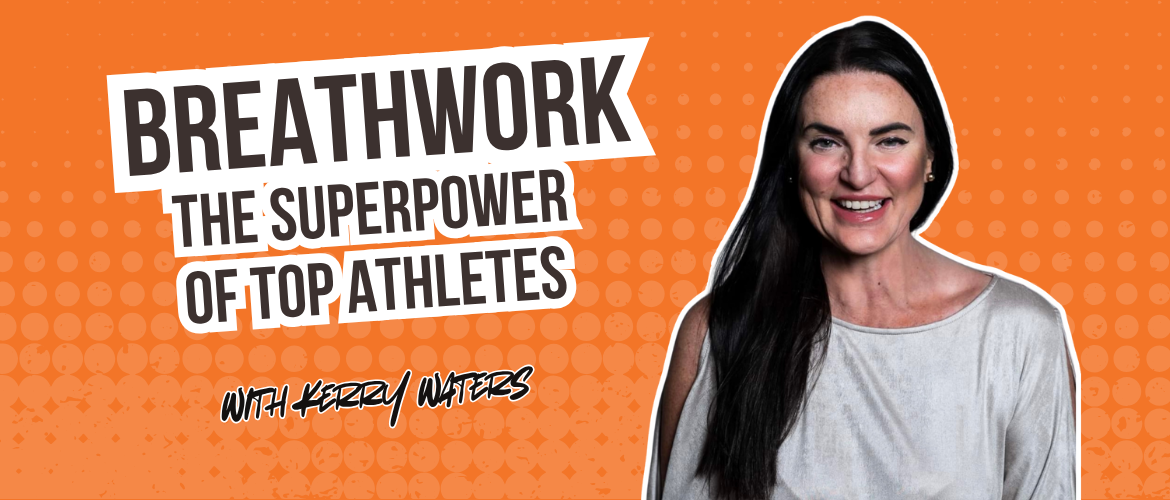GET IN TOUCH TODAY!
"*" indicates required fields

At Storm Fitness Academy, we’re always exploring the tools that help coaches and clients train harder, recover better, and feel more alive.
So when I noticed more elite athletes talking about breathwork – from Djokovic to McIlroy – I wanted to know what the fuss was about. I invited Kerry Waters, a personal transformation coach and expert in breathwork, cold therapy, and mindfulness, to join me for a two-part conversation on how these tools are changing the game for athletes and fitness professionals.
What followed was a fascinating discussion about how breathwork goes far beyond relaxation or stress relief. Kerry explains how it’s being used to enhance recovery, performance, focus, emotional resilience – and even bring about euphoric states without any substances involved.
Here’s what we covered in Part 1…
We kicked off by chatting about how breathwork is booming in sport. Kerry mentioned Djokovic, who credits conscious breathing for helping him stay calm, focused, and composed in high-stakes moments. Rory McIlroy too has spoken about using calming breath techniques to maintain concentration during tournament prep.
But breathwork isn’t just for elite athletes. Kerry believes it’s a superpower anyone can use – and it works across three pillars:
Physical performance
Mental focus
Emotional regulation
Kerry explained how different breathwork techniques can increase the efficiency of oxygen delivery to muscles – crucial for endurance, power output, and quicker recovery.
“You’re improving the way haemoglobin releases oxygen into cells – including muscle tissue,” she said. “That’s why so many athletes are now using it to push their performance.”
It also supports cardiovascular fitness, boosts HRV (Heart Rate Variability), and aids recovery by calming the nervous system. In other words, better oxygen in, better recovery out.
Breathwork also helps athletes (and everyday clients) switch off, reduce anxiety, and recover mentally.
“The breath is the gateway to the nervous system,” Kerry told me. “It helps you shift out of fight or flight and into a parasympathetic state.”
This means it’s not just for post-workout recovery, but also for those moments when you’re wired, overwhelmed, or struggling to focus.
We talked about ADHD too – and how certain calming breath patterns may help people regulate energy, focus their attention, or finally unwind at the end of the day.
I shared with Kerry a recent session I did with a mate in my cabin using the Wim Hof method – five rounds of deep breathing followed by long breath holds.
We came back indoors feeling serene, euphoric, and relaxed. No booze. No distractions. Just a sense of calm focus.
“It was the best I’ve felt in ages,” I said to Kerry. “Like we’d tapped into something – and didn’t want to ruin it with anything else.”
She explained how techniques like Wim Hof push the body into a state of intentional stress by reducing CO₂ levels. This can release endorphins, serotonin, and even small amounts of DMT, our body’s “spirit molecule” – giving that surreal, connected feeling some people describe during deep sessions.
This isn’t just a tool for pros. Kerry was clear – breathwork helps anyone who wants to:
Improve their performance
Recover faster
Manage stress
Feel calmer and more in control
Tap into their body’s natural chemical pharmacy
And once you’ve been shown how to use it properly, you’ve got a free, powerful tool you can use anytime, anywhere.
We explore how personal trainers and fitness professionals can start applying breathwork with clients – safely, effectively, and within your scope of practice. Plus, the surprising risks you need to know before diving in.
If you’re passionate about training, recovery, and tools like breathwork — and you want to make a career out of helping others get healthier, stronger, and more resilient — we’d love to hear from you.
Fill out the contact form to learn more about becoming a qualified Personal Trainer with Storm Fitness Academy.
"*" indicates required fields